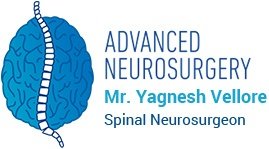A Modern Guide to Cervical and Lumbar Artificial Disc Replacement Surgery
When it comes to chronic neck or lower back pain, especially from degenerative disc disease, artificial disc replacement (ADR) is a surgical option that’s becoming more popular. Let’s explore what that means for both cervical (neck) and lumbar (lower back) discs.
What is Artificial Disc Replacement?
Artificial disc replacement is a procedure where a damaged or degenerated disc in the spine is removed and replaced with an artificial one. This artificial disc is designed to mimic the natural movement of your own spinal disc, allowing flexibility and motion rather than fusing the bones together.
Indications for Surgery
ADR is often indicated for patients who have not found relief from non-surgical treatments, like physical therapy or medications. This is particularly for those who have degenerative disc disease confined to one or two discs. For cervical ADR, patients typically have chronic neck pain or radiating arm pain. For lumbar ADR, it’s for lower back pain that hasn’t improved with other measures.
The Surgical Procedure
The surgery involves making an incision—often on the front of the neck for cervical discs or the abdomen for lumbar discs—to access the spine. The damaged disc is removed, and the artificial disc is placed into the empty space. The surgeon then ensures everything is aligned properly before closing the incision.
Outcomes and Recovery
The goal of ADR is to maintain the spine’s natural range of motion and reduce the chances of adjacent segment degeneration, a potential issue with spinal fusion. Most patients can expect a relatively short hospital stay and will typically engage in physical therapy afterward to regain strength and ensure the spine remains flexible.
Overall, many patients experience significant relief from their symptoms and can return to their normal daily activities with improved quality of life.

